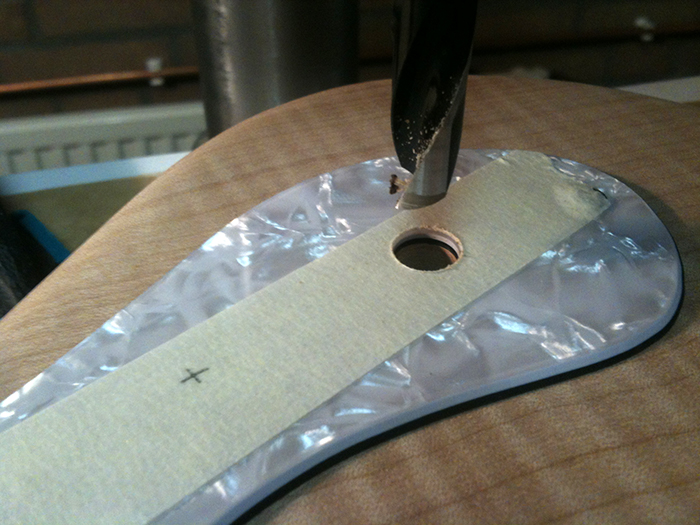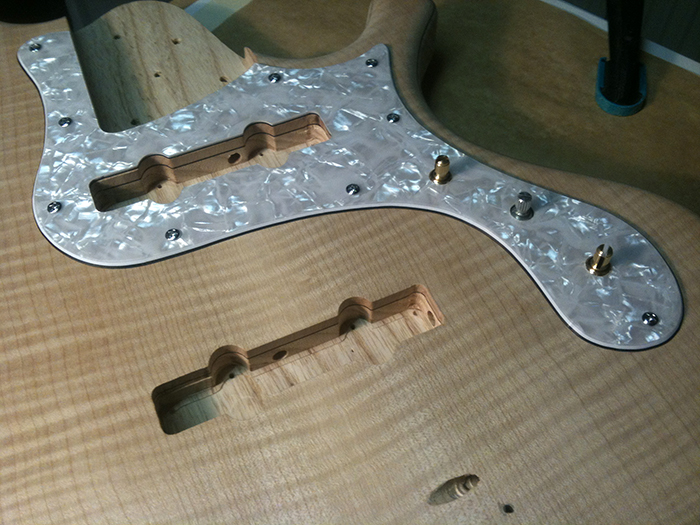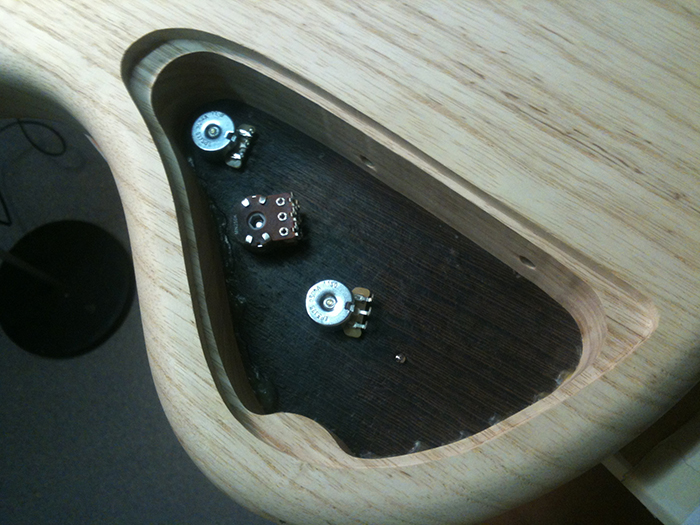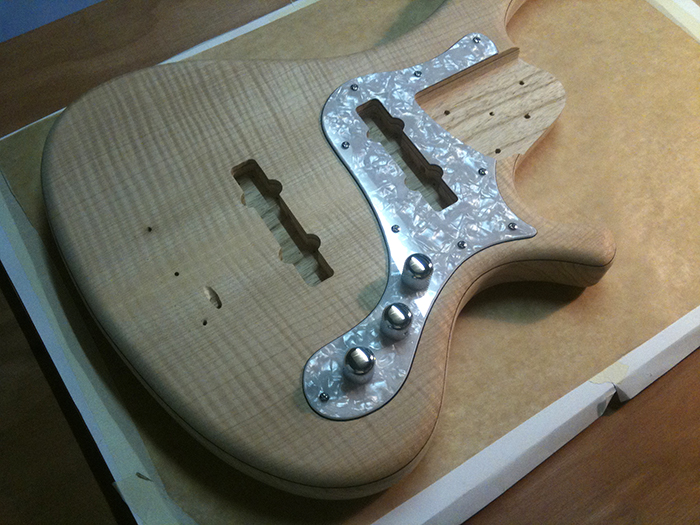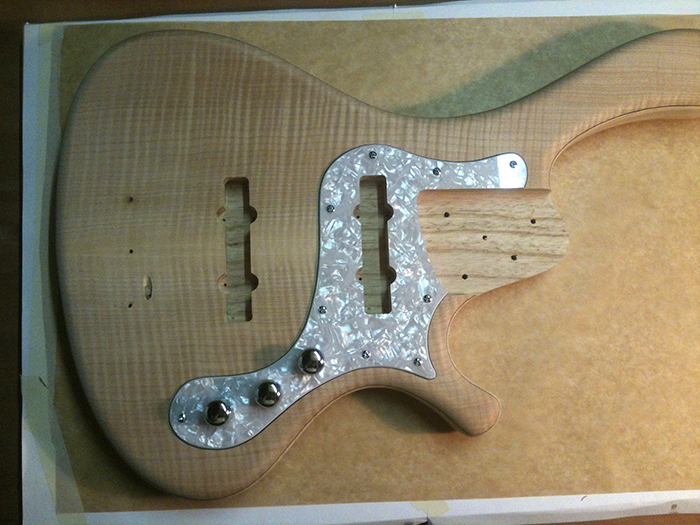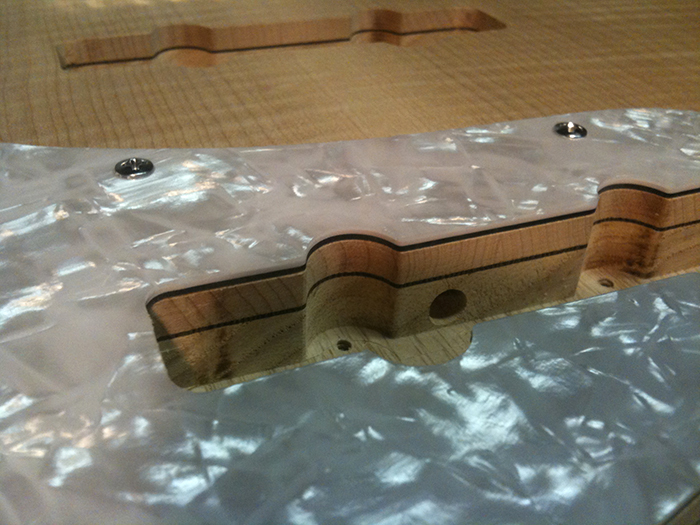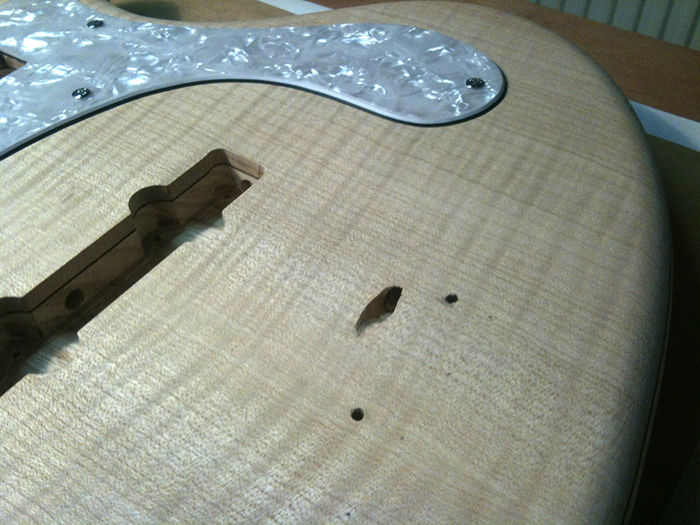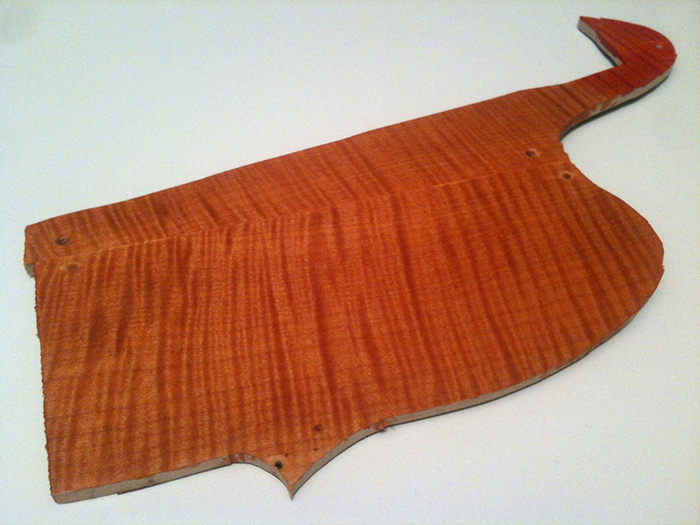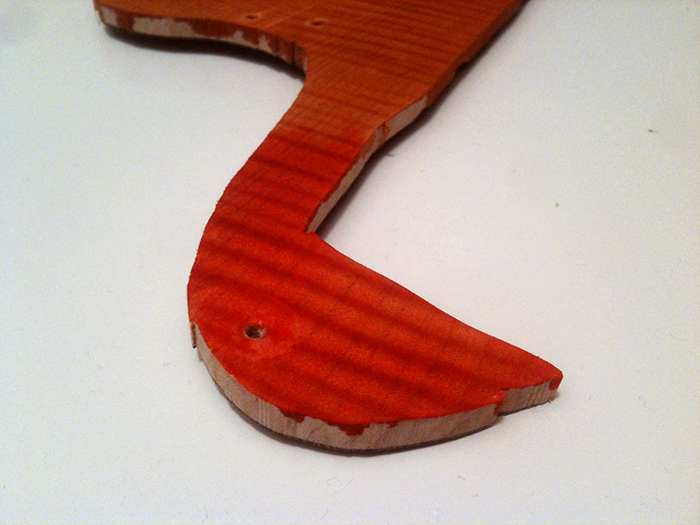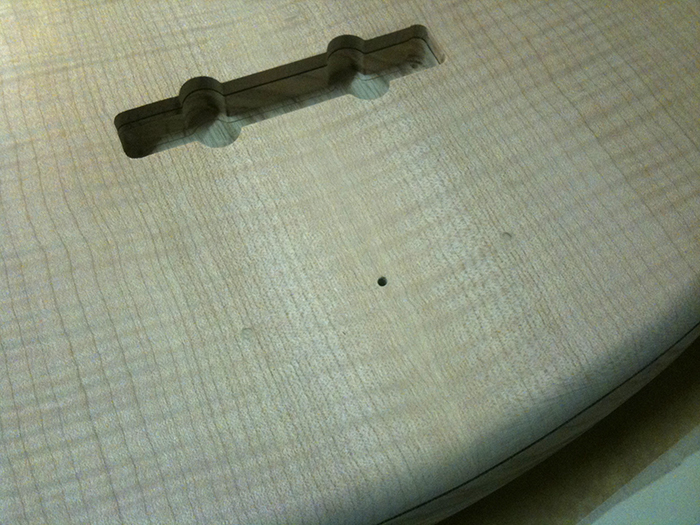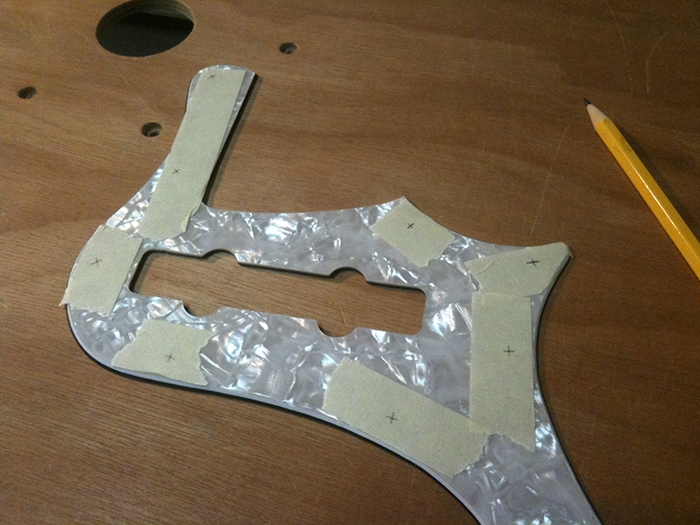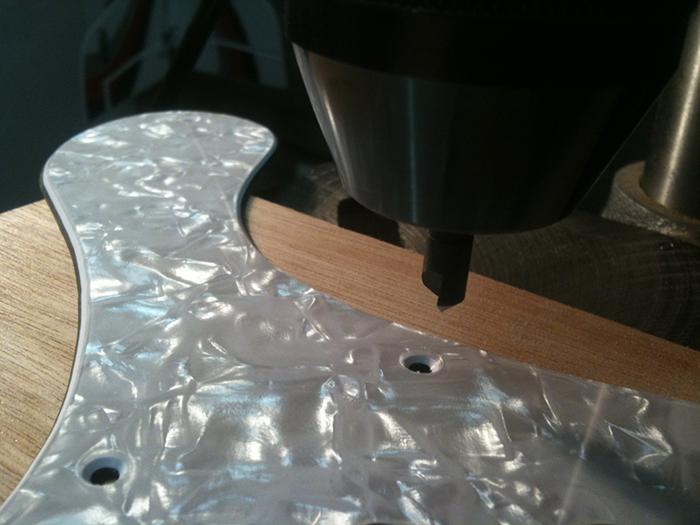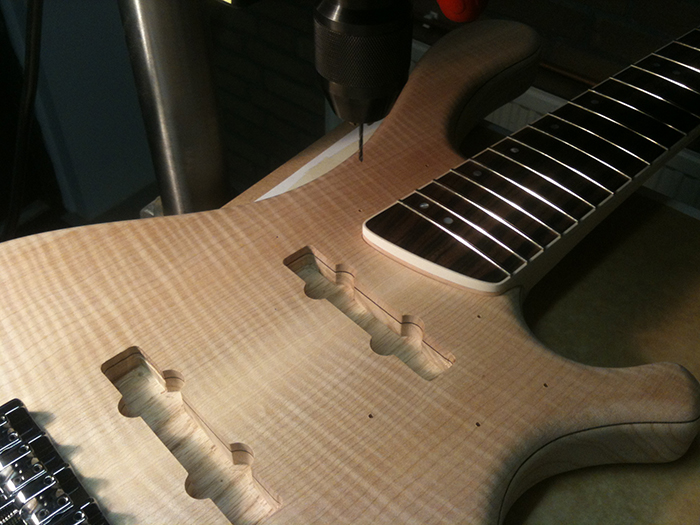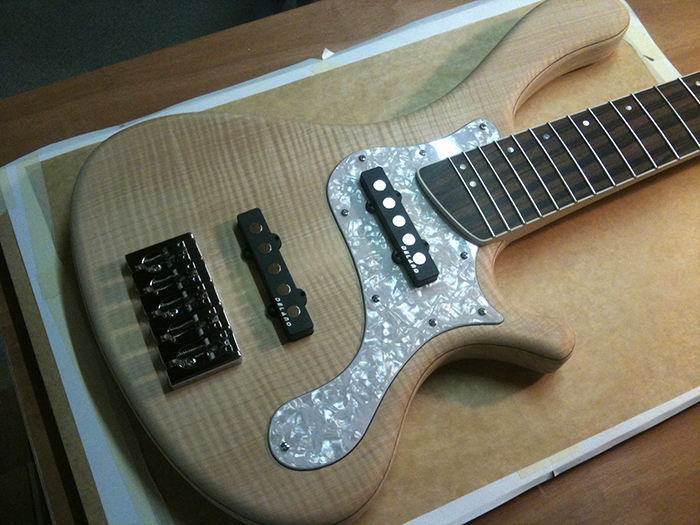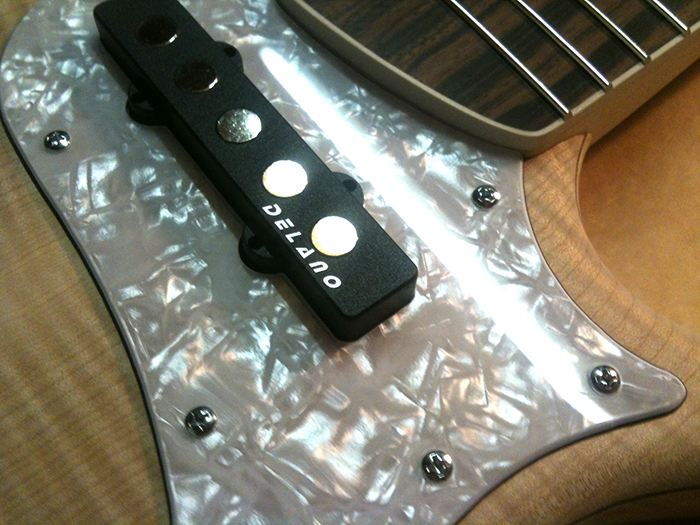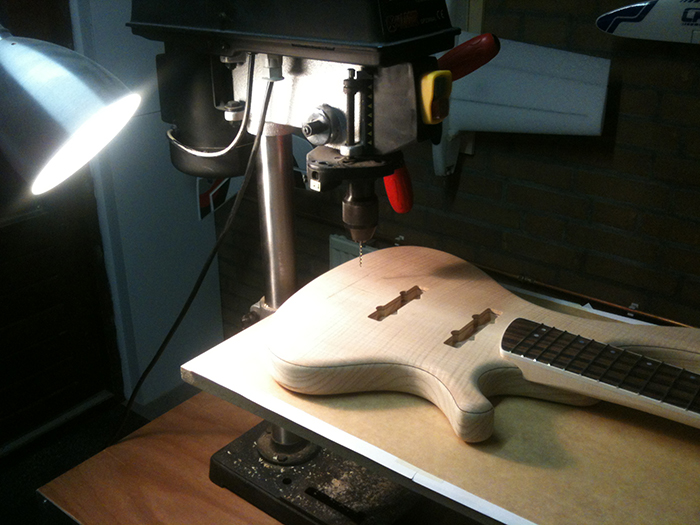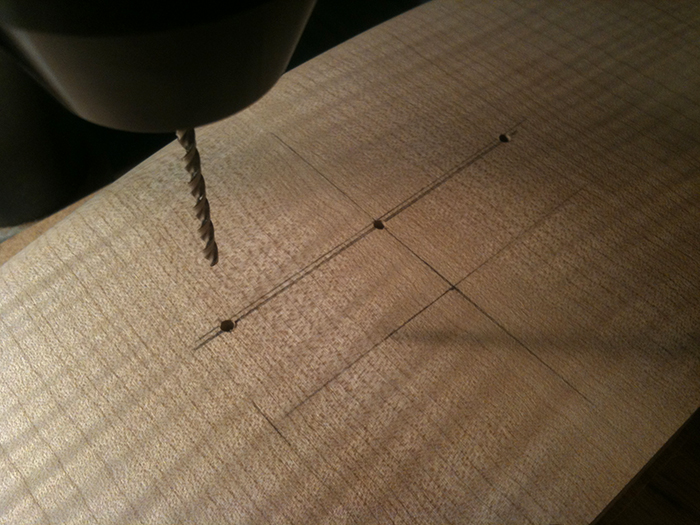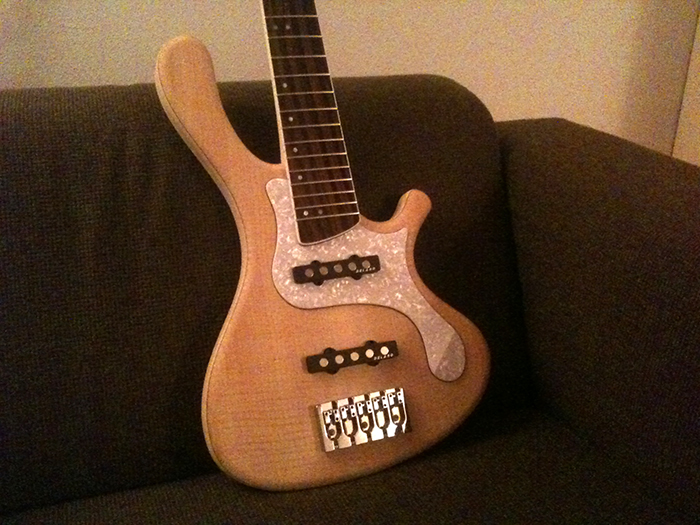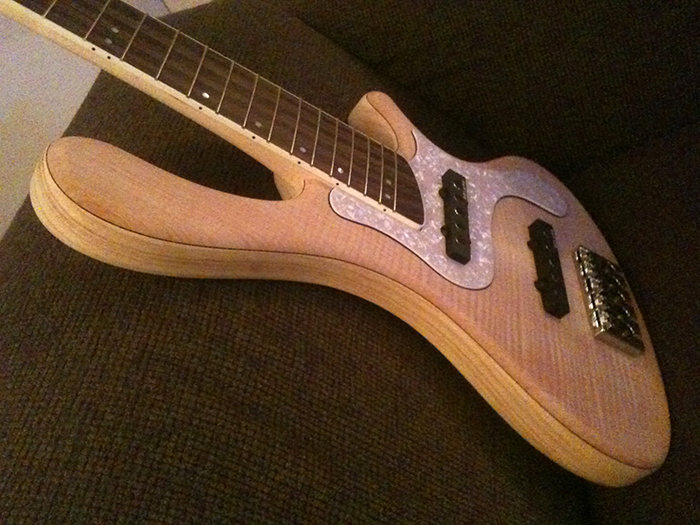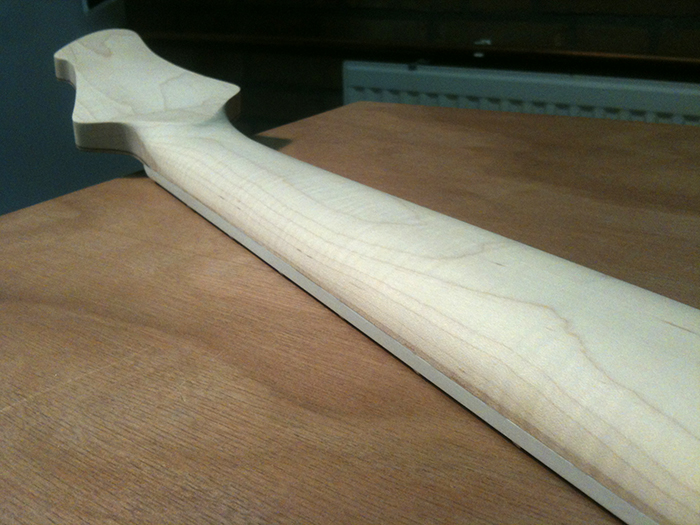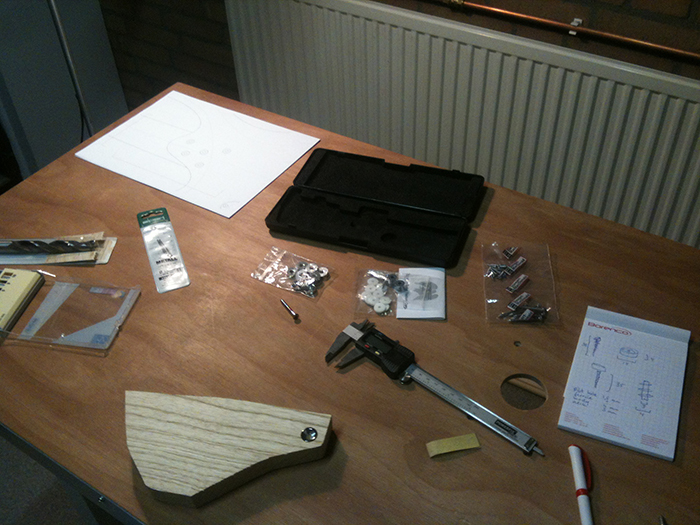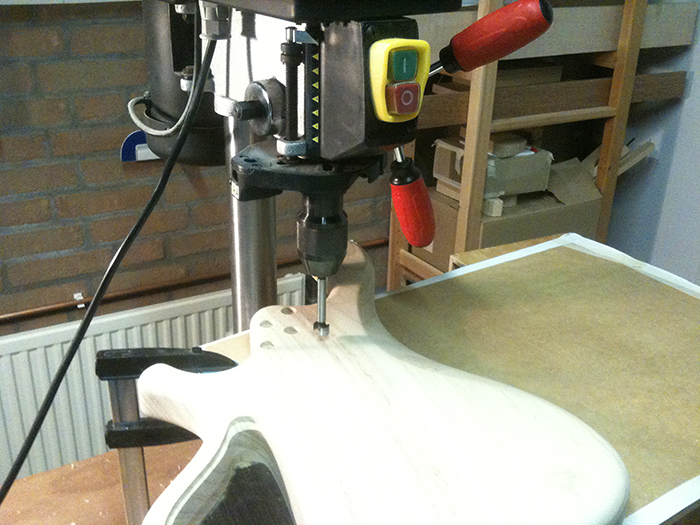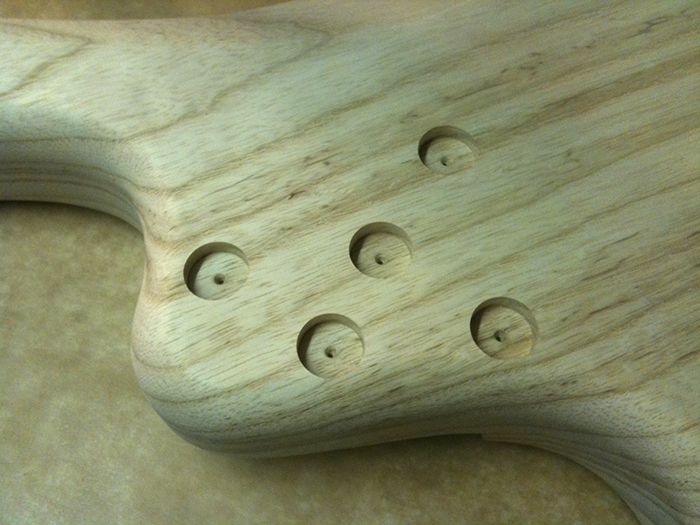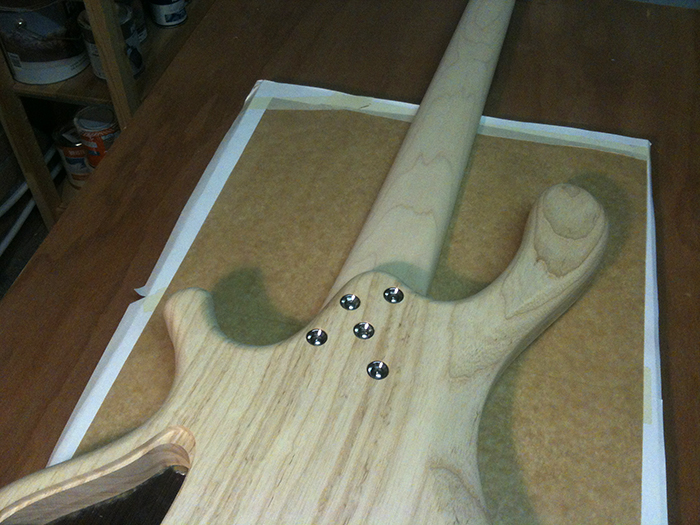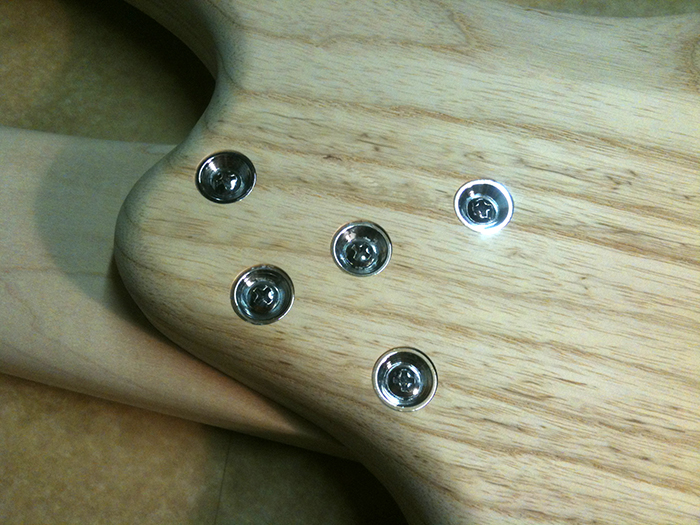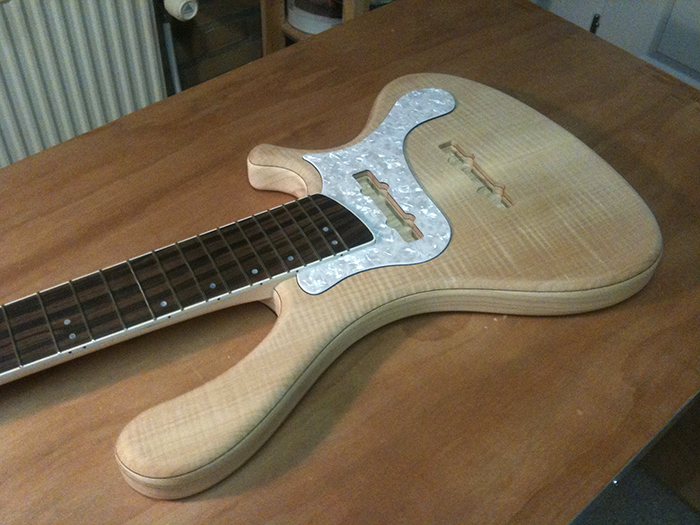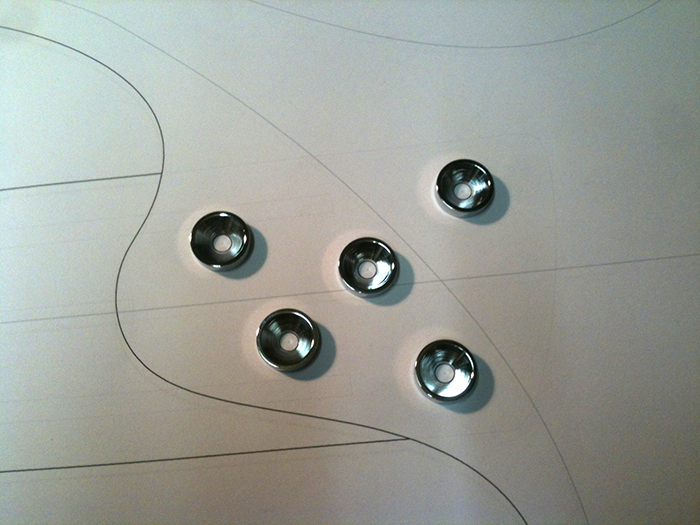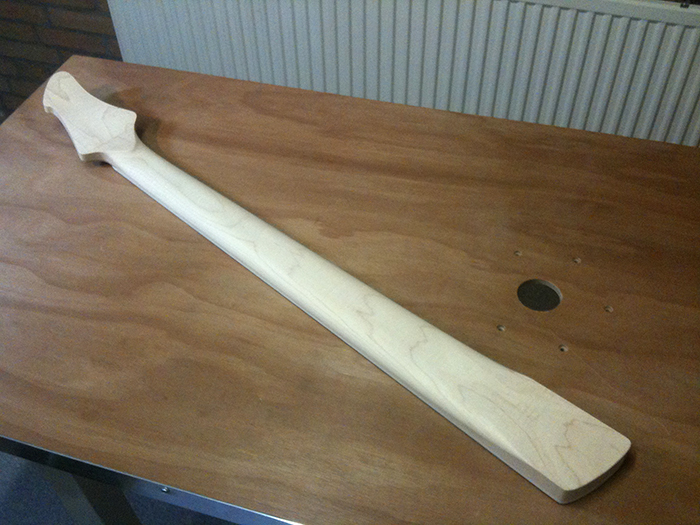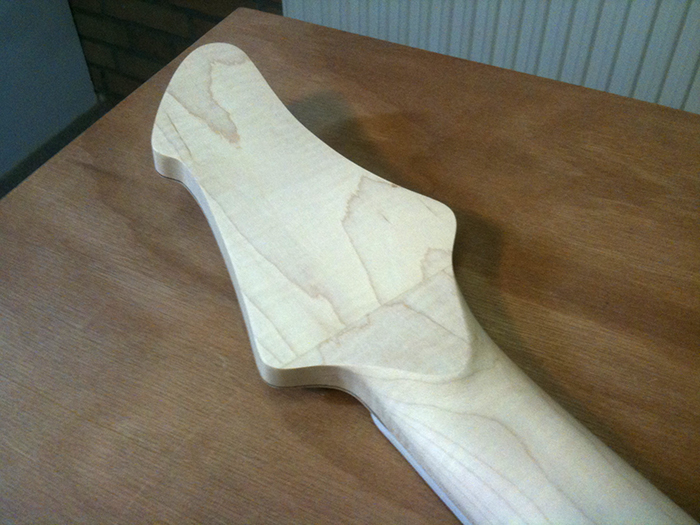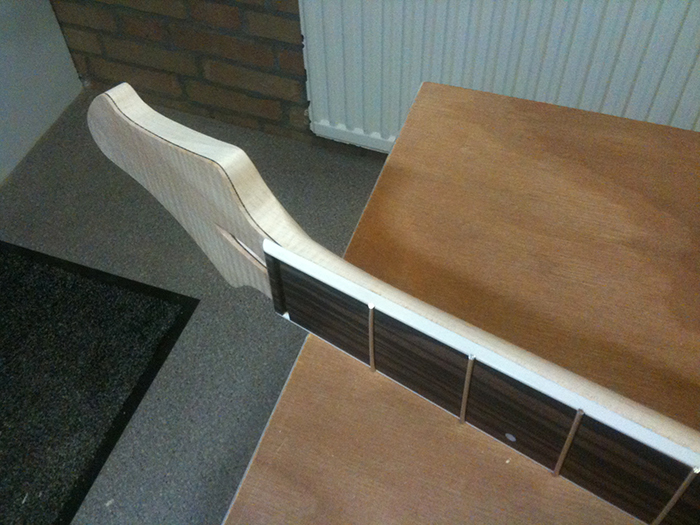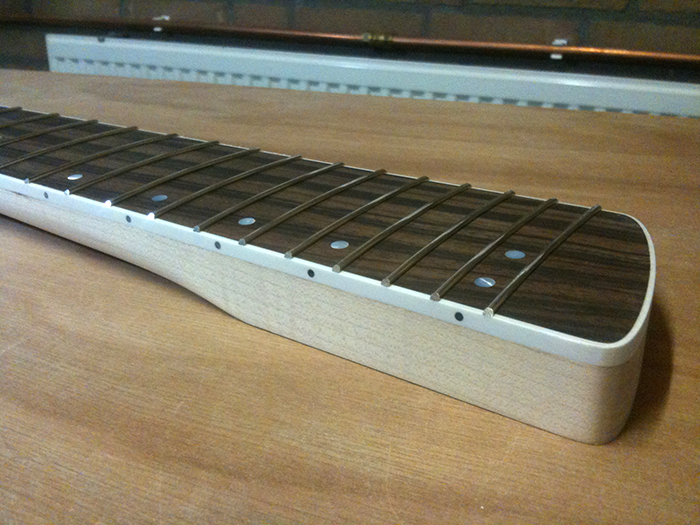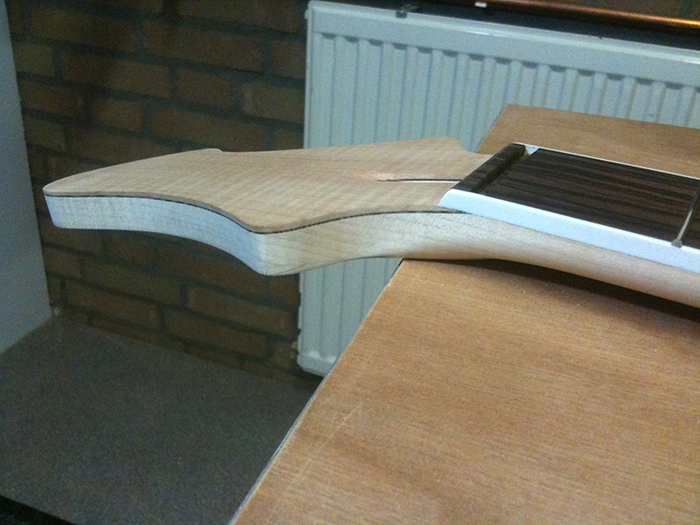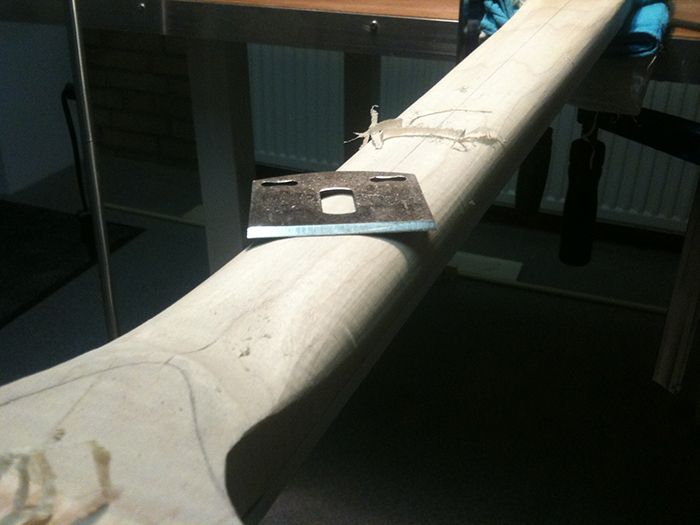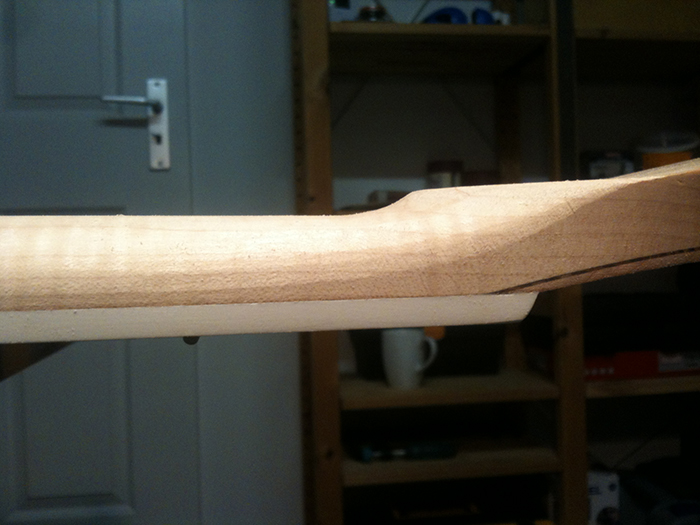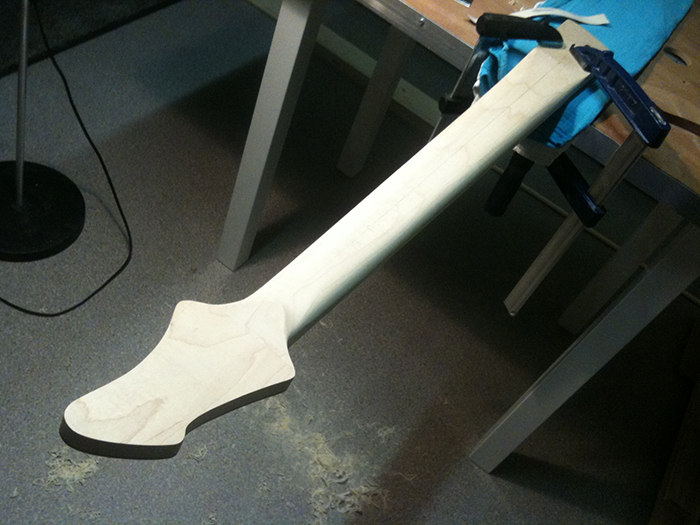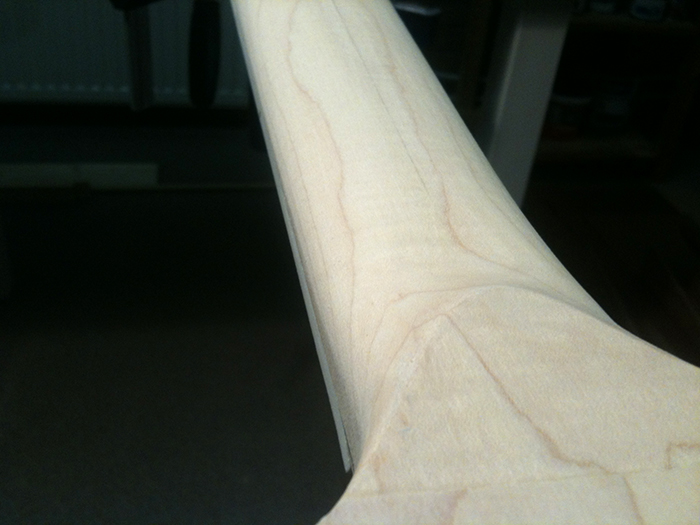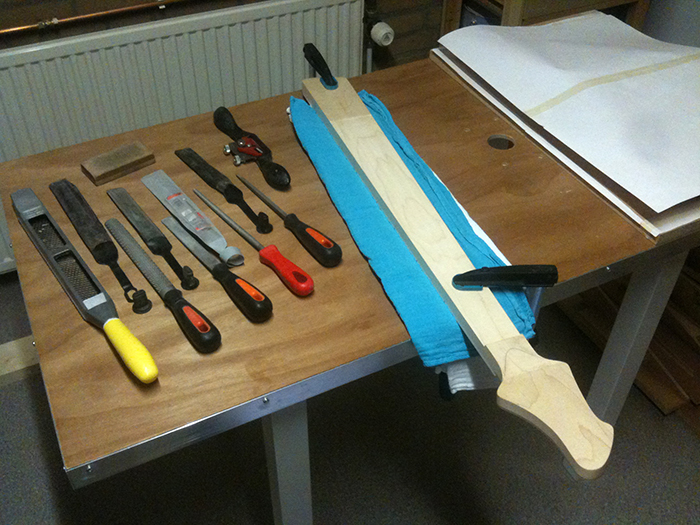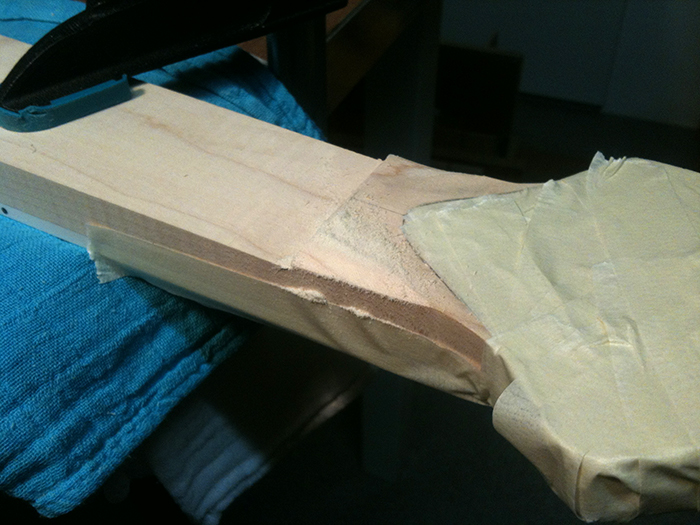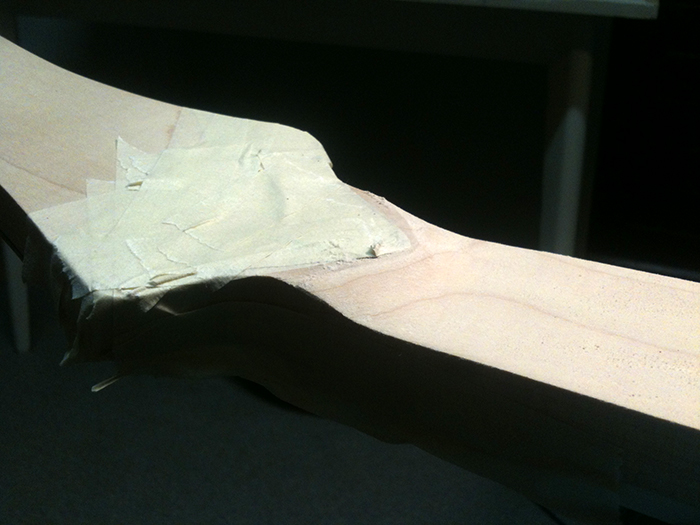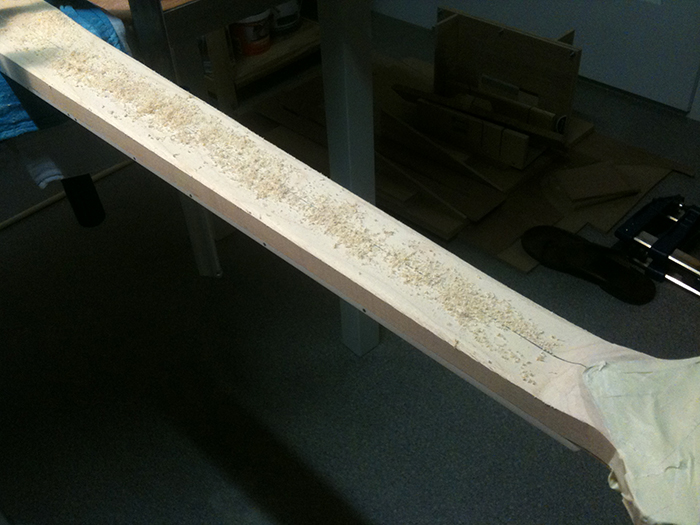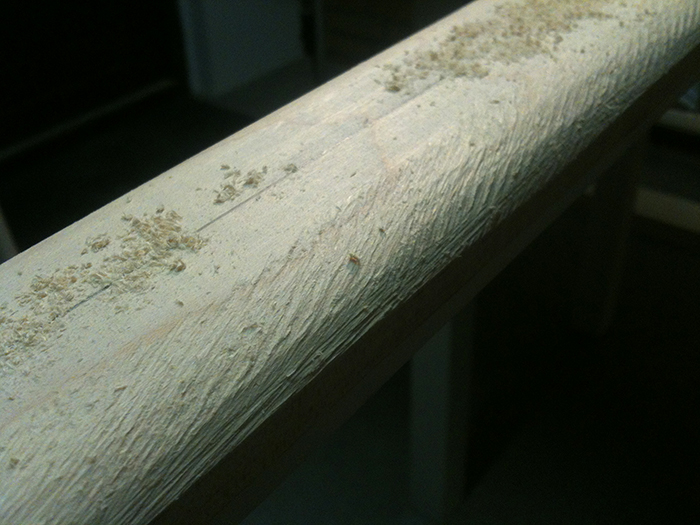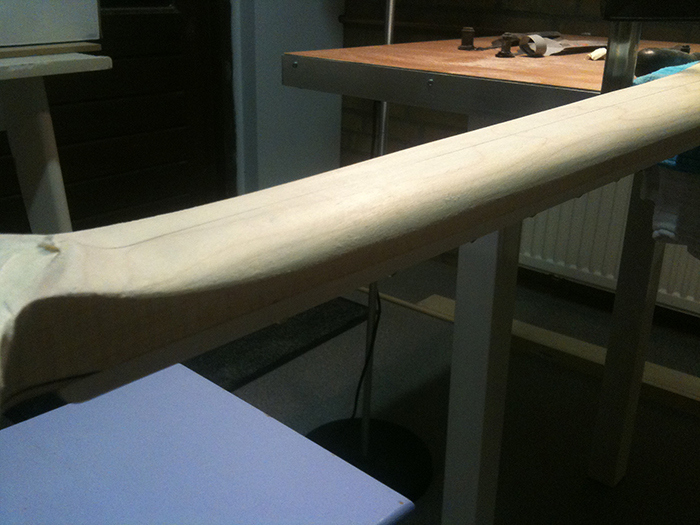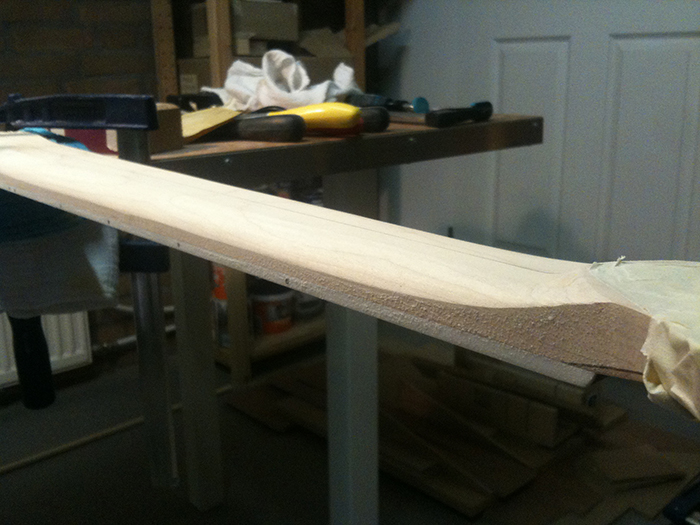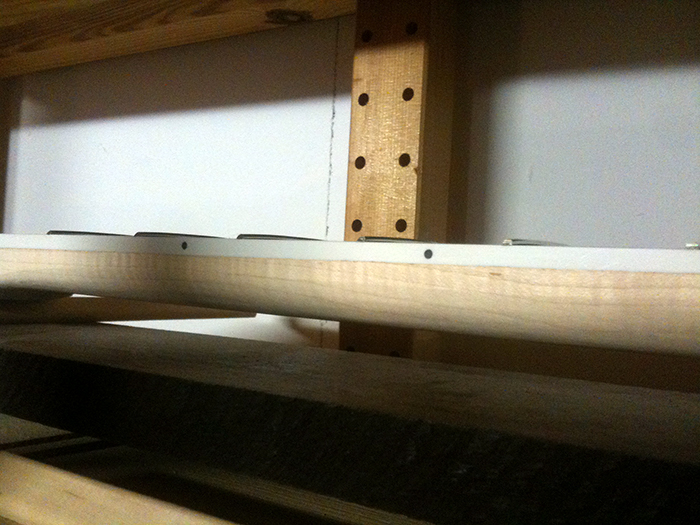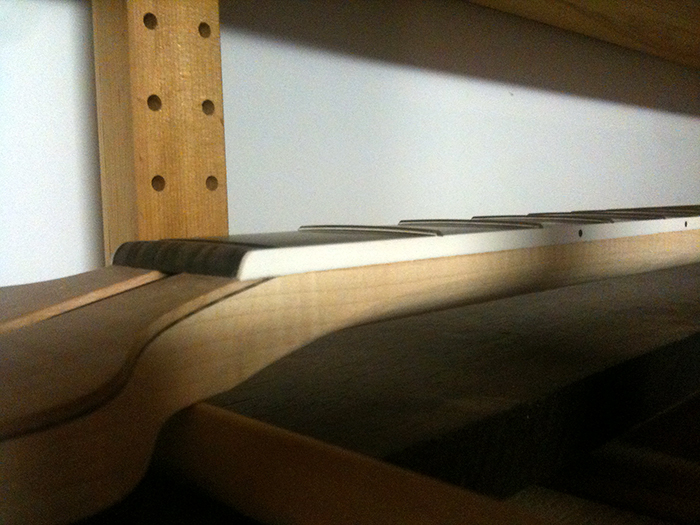Received both the pots and the knobs today, so I drilled holes for the control pots tonight:
Well, that went quite well, positioning went perfect, as by design, and the pots fit well:
You can see it’s a good thing I ordered mini pots, as regular pots wouldn’t fit at all, especially the volume control. On the bright side I’ll have some room left for a future upgrade to active tone control (I reckon a Delano Sonar II and battery would still fit in there):
By the way, my top (5.5 mm) and pickguard (2.5 mm) are too thick for the control pot shafts. Long shaft pots would’ve been better, but they are not available in a mini version or as a blend pot, so I will have to drill some larger recess holes (1" in diameter and 3 mm deep) from the back to be able to install the pots. Just another thing on my list before I can start finishing the bass.
And of course some shots with the knobs on. Despite the fact that they are not closer together than normal, the small body and small pickguard make them look rather large. I’m a little bit in doubt, maybe I’ll try mini dome knobs on there… but I’m not sure. If the rest of the hardware is on I think it will balance out anyway.

